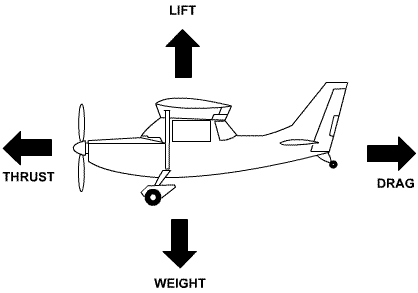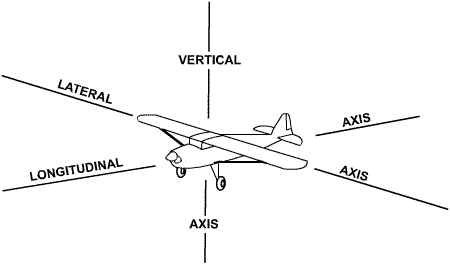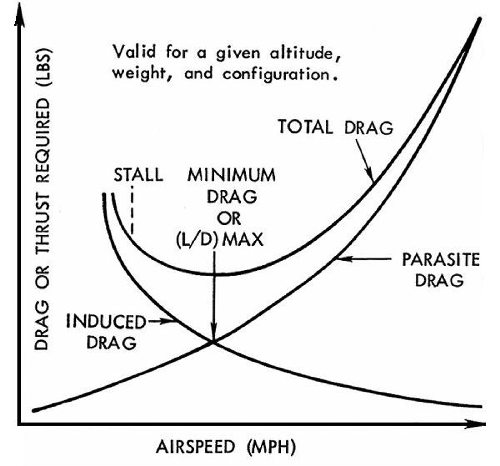|
|
|
Four Forces
In unaccelerated level flight the force of lift is equal and opposite to weight, and the force of thrust is equal and opposite to drag.

Imbalance of the forces will cause a change in speed or altitude of the airplane. Lift produced by an airfoil is the net force developed perpendicular to the relative wind.
There are three reference axes around which an airplane rotates in flight, all of which intersect at the center of gravity, (CG). The vertical or yaw axis runs vertically through the CG. Motion around this axis is called yaw and is controlled by the rudder. The longitudinal or roll axis runs lengthwise through the fuselage from nose to tail. Motion around this axis is called roll and is controlled by the ailerons. The lateral or pitch axis extends horizontally through the airplane from wing tip to wing tip. Motion around this axis is called pitch and is controlled by the elevators. Each axis is perpendicular to each of the other two.

Trim tabs are provided to relieve control pressures in flight. The tabs are small airfoils located at the trailing edge of the associated control and moved, by the pilot, in the direction opposite to which the control is to be moved.
Drag is the rearward acting force which resists the forward
movement of the airplane through the air. It acts parallel
to and in the same direction as the relative wind. Total
drag is the sum of induced drag and parasite drag. 
Induced drag is produced when lift is produced and increases in direct proportion to increases in angle of attack. Since the angle of attack required to maintain lift equal to weight is greater at slow speeds, induced drag is also greater at slow speeds.
Parasite drag is air resistance produced by any part of the airplane that does not generate lift. Landing gear, radio antennas and steps are examples of components that produce parasite drag. Parasite drag increases as the airspeed increases. If the speed is doubled, parasite drag increases by a factor of four.
Best glide speed occurs at the point of minimum drag or L/D Max.